I’m always a bit taken aback by this inquiry, often posed by a curious onlooker while I’m pointing my binoculars up in the trees. In my little bubble, looking at birds is hardly unusual.
It’s even more mystifying to me when I get this question – and I have several times – in national parks. I always thought you visited national parks to enjoy nature.
The 63 U.S. national parks are famous for their scenic vistas, great hiking trails and large mammals. They’re also great places to go birding. It’s true that many parks, particularly in the western United States, were established to protect mountains, canyons and geological formations. These habitats are not known for their high biodiversity and the best birding is usually found in more diverse habitats.
Still, I have always found it worthwhile to bring binoculars and field guides along on national park trips. Some parks offer the chance to see rare or endemic birds. Others offer great all-around birding.
Here are 8 U.S. national parks that offer interesting birding opportunities. Did I miss your favorite? Let me know in the comments.
Top 10 List
-
Everglades National Park
Florida

A wood stork in a sawgrass plain in Everglades National Park. © Eric Blackmore In the early20th century, many species of egrets, herons and other water birds seemed destined for extinction. The cause? Plume hunters who sold the feathers for use in fashionable hats. Florida was at the epicenter of this relentless commercial hunting.
Sometimes conservation is complicated. Sometimes it is not. In this case, all that was needed to save the water birds was for people to stop killing them. The prohibition on the feather trade resulted in the bird populations quickly rebounding. The colonies of water birds you see in Everglades National Park today is a testament to that conservation action.
I love fishing the Everglades, but frequently find myself diverted by interesting birds. Purple gallinules, roseate spoonbills, wood storks, snail kites, anhingas and more than 300 other bird species can be spotted. While water birds are the most visible, you can also spot Cape seaside sparrows, various warblers, barred owls and many more.
A good starting point would be to rent a bike and explore Shark Valley, but there are so many options. Everglades National Park’s website has an excellent guide to help you find the species you most want to see.
-
Hawai’i Volcanoes National Park
Hawai’i
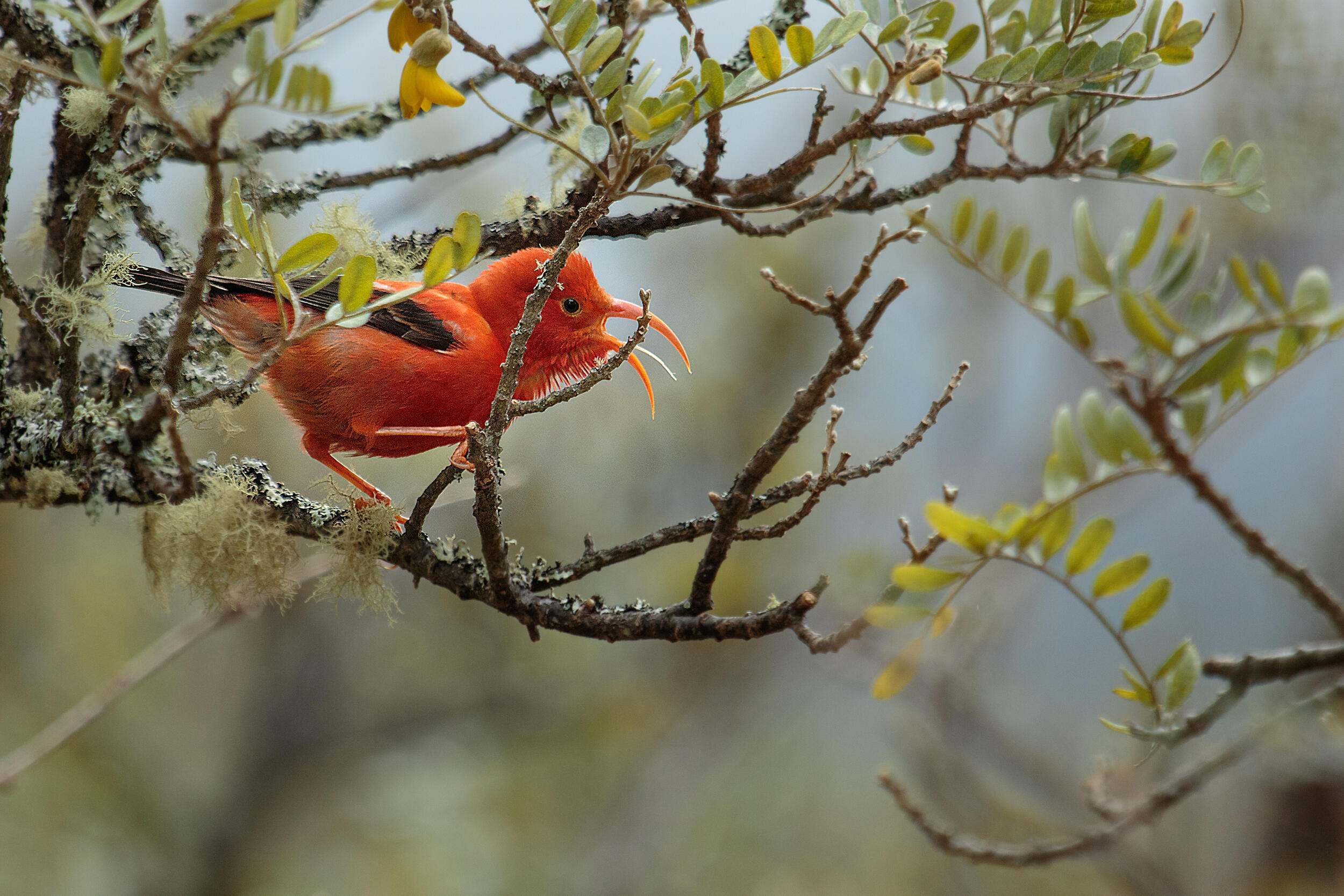
An ʻiʻiwi, or the Scarlet Hawaiian honeycreeper, perches on a branch in Hawai’i. © Mark Kimu Hawai’i’s endemic birds have been decimated since European colonization due to habitat loss and especially the introduction of mammalian predators like cats, pigs and mongooses. Hawai’i Volcanoes National Park remains a stronghold for native birds and is one of the places where you can realistically see endemic species.
One of the most visible, and charismatic, is Hawai’i’s native goose, the nēnē. You can often see these native geese roaming the lava fields. Look for more on the interesting nēnē in an upcoming Cool Green Science blog.
Endemic forest birds are much more challenging to spot. Their rainforest habitat is quite dense and the presence of many small non-native birds can made identification a challenge. With a little work, though, you can have rewarding views of some really beautiful species.
On a recent trip to the national park, I was able to spot such species as the ‘i’iwi, ‘apapane and Hawai’i ‘elepapaio.
The popular Crater Rim Drives is an excellent starting point for forest birds, particularly if you take time to walk slowly along the forest trails. The Mauna Loa Drive offers opportunities for higher-elevation species and smaller crowds.
The Nature Conservancy has a long history of working with Hawai’i Volcanoes National Park, including a 133,000-acre addition in 2003. In 2018, the Conservancy transferred another 222-acre parcel that helps connected protected areas and protect native bird habitat.
Side Trip: If you’re on the “Big Island” of Hawai’i, there’s a good chance you’ll spend time on the coast. Another great stop is Kaloko-Honokōhau National Historic Park. It offers a great introduction to cultural history, as well as great opportunities to see the endemic Hawaiian coot and Hawaiian subspecies of the black-necked stilt.
-
Saguaro National Park
Arizona
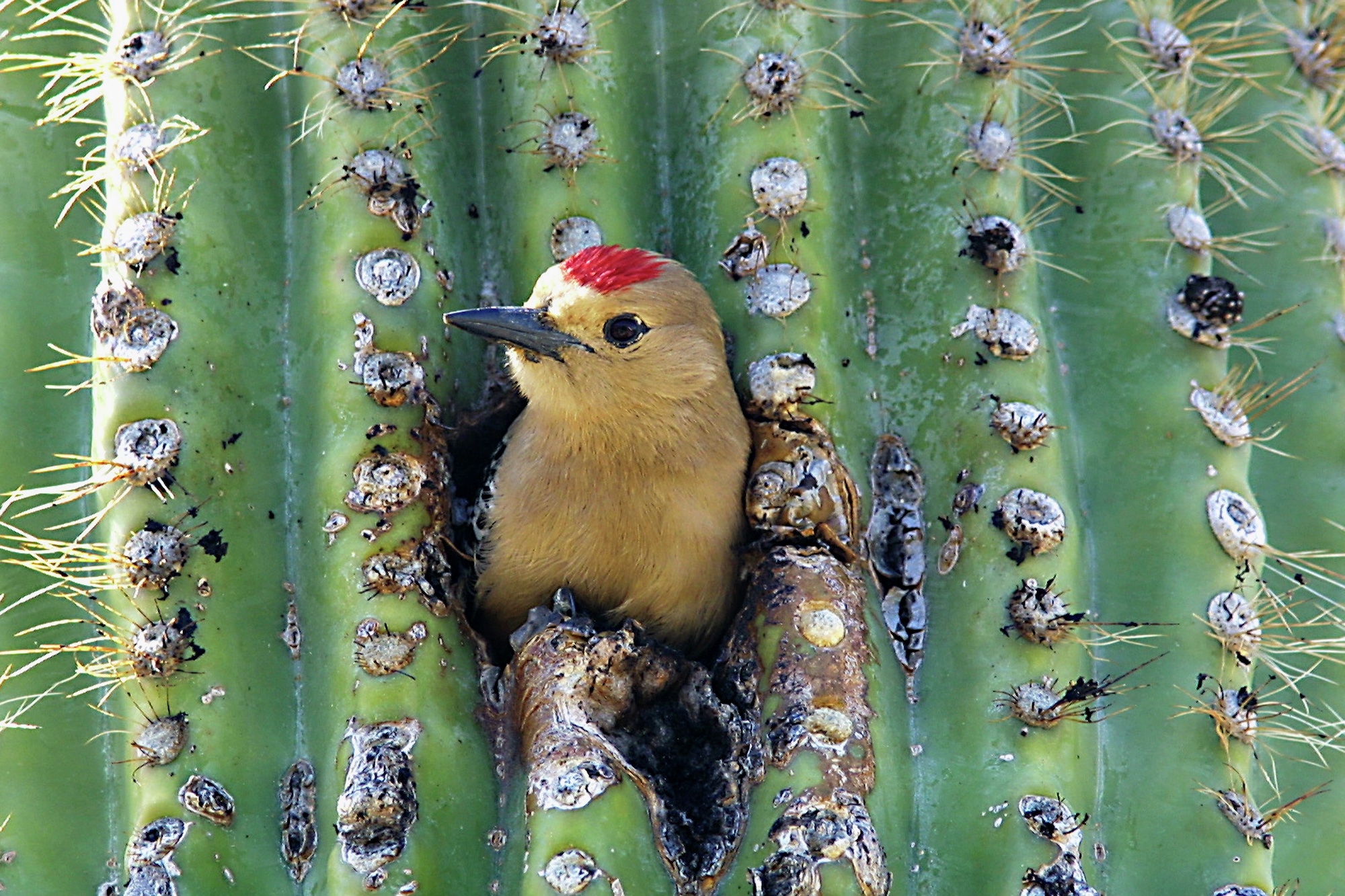
A male gila woodpecker emerges from a saguaro cactus. © David Harvey Southern Arizona is one of the best birding destinations in the United States, with plenty of birding-centered lodges, tours and preserves. Saguaro National Park is a great stop on any itinerary in the region.
According to the National Park Service, vermilion flycatchers and whiskered screech owls are particular favorites for life-listing birders. I loved seeing the desert birds: greater roadrunners, cactus wrens and Gila woodpeckers are all particularly common. Another favorite is the pyrrhuloxia, closely related to the northern cardinal, but gray with red highlights.
Side Trip: There are so many options for birders in this region, most well-covered by organized birding tours and guidebooks. Madera Canyon is great for birds as well as mammals like ringtails and coatis. The Nature Conservancy’s Ramsey Canyon Preserve is another birding hotspot, especially April through September. Hummingbirds can be viewed from the visitor center, and elegant trogon is a possibility on the trails.
-
Congaree National Park
South Carolina
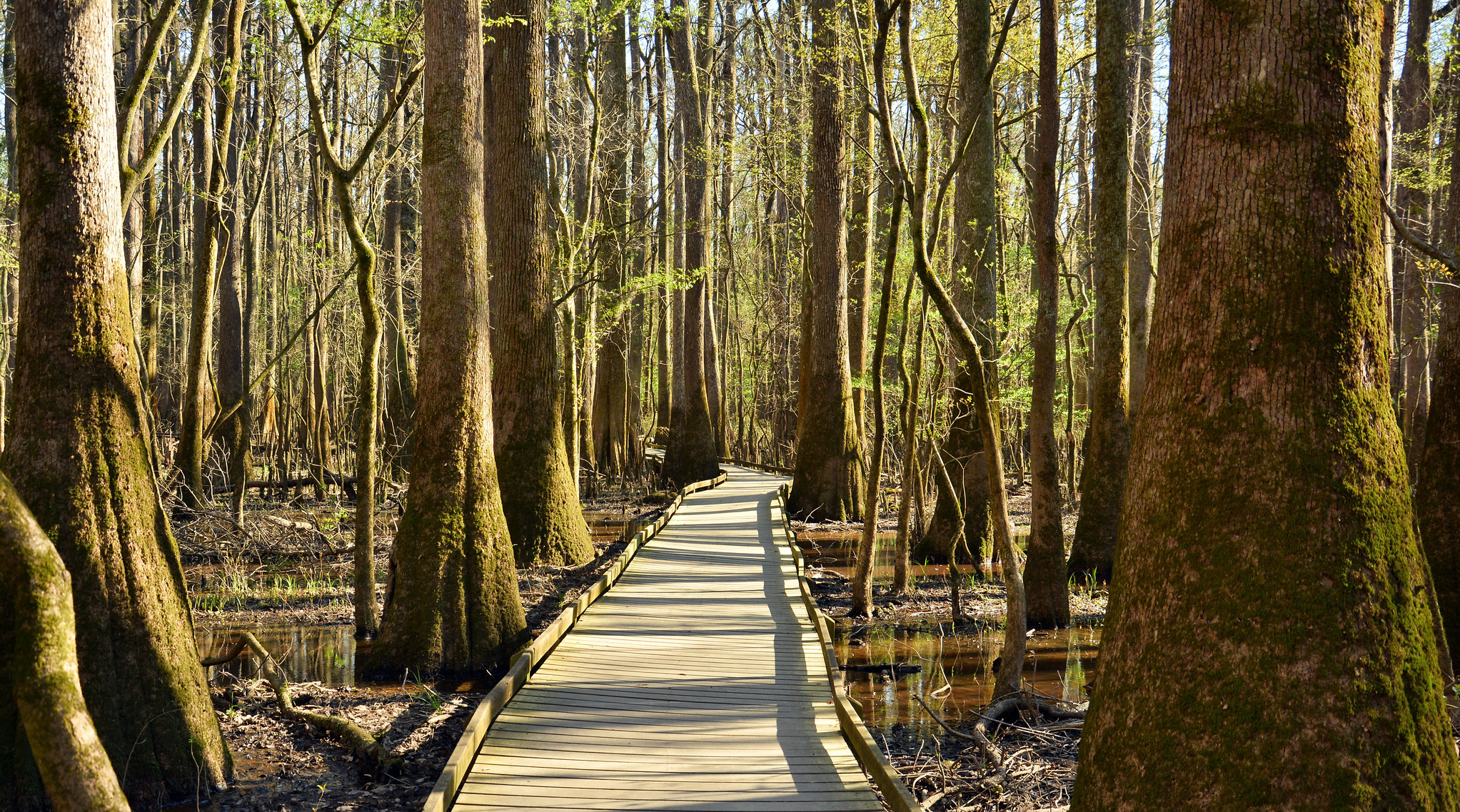
The boardwalk at Congaree National Park. © Blake Lewis / Flickr I had the chance to spend a morning at this gem, the “the largest intact expanse of old growth bottomland hardwood forest remaining in the southeastern United States.” Perhaps the biggest wildlife draw here is the synchronous fireflies (and you must limit mosquito repellant on main trails to not repel these insects).
The Carolina Bird Club notes “The park’s checklist has just under 200 species of birds—not a great number of species, but this is made up for by the sheer number of individuals present at all times of year.”
Woodpecker species are common, as are many water bird species. Depending on the time of year, you can also find rusty blackbirds, white-eyed vireos, brown-headed nuthatches and northern parulas.
A boardwalk trail starting at the visitor center easily leads you into this beautiful habitat, even when water levels are high. For the more adventurous, there are many miles of wilderness hiking and paddling trails.
-
Channel Islands National Park
California
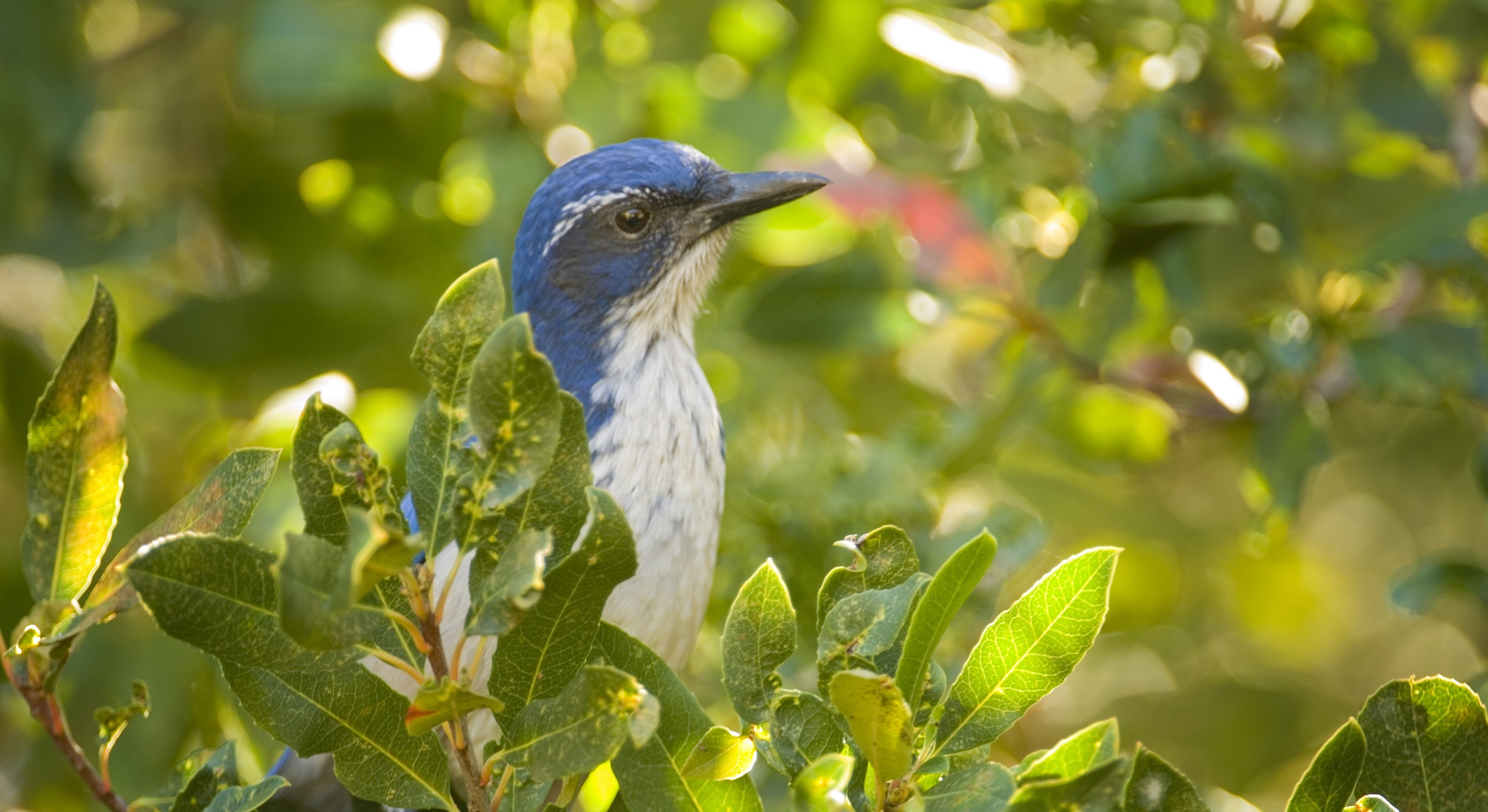
An island scrub jay sitting on branch on Santa Cruz Island. © Stephen Francis The five islands that comprise Channel Islands National Park are not far off California’s coast, but they are home to wildlife found nowhere else on earth.
The park offers excellent birding for land and sea birds, but for serious birders, there’s one big draw: the island scrub jay. This bird is found only on Santa Cruz Island, the only North American bird with a range restricted to one island.
Santa Cruz is simply a magical place to hike (and camp), with the housecat-sized island foxes roaming around, sea lions barking along the shore and plenty of birds. Give yourself time to search; I heard but did not see the island scrub jay on my visit, focused mainly on mammals. It’s a reason to return.
The Nature Conservancy has a long history working with the National Park Service to protect, restore and research these special islands.
-
Zion National Park
Utah
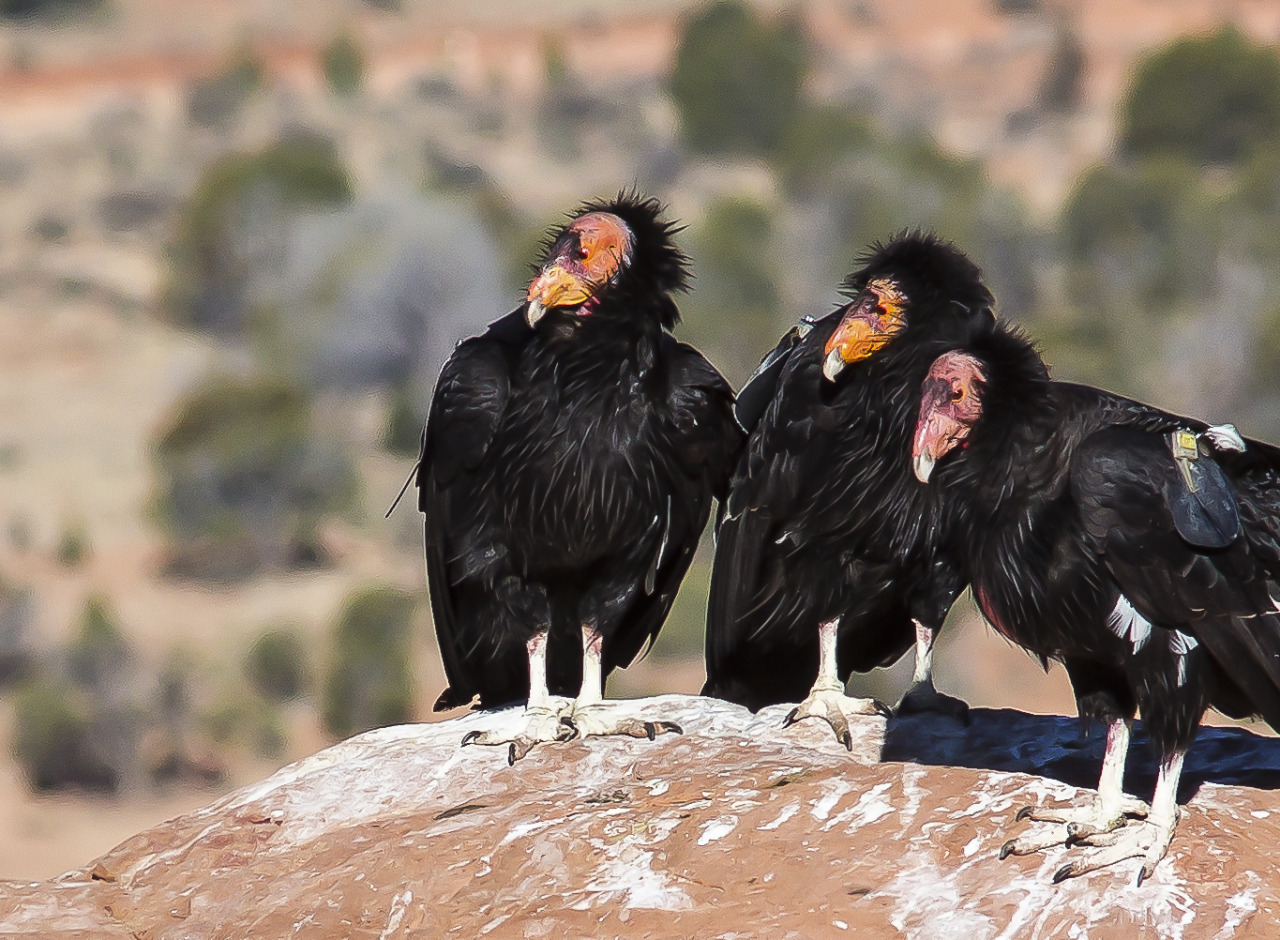
Three condors perch together. © Bob Wick, Bureau of Land Management / Flickr Zion is one of those parks that draws huge crowds for the scenery. Even if you have just a passing interest in birds, though, it’s worth spending some time searching for one special species in Zion, the California condor.
The California condor has the longest wingspan of any North American bird (around 10 feet). It also has a story: the condor faced almost certain extinction until a captive breeding program was initiated.
Zion and Pinnacles National Park in California (a park I haven’t yet visited) have become two of the more reliable spots to see California condors. I detailed my own condor quest in a previous blog.
-
Redwoods State and National Parks
California
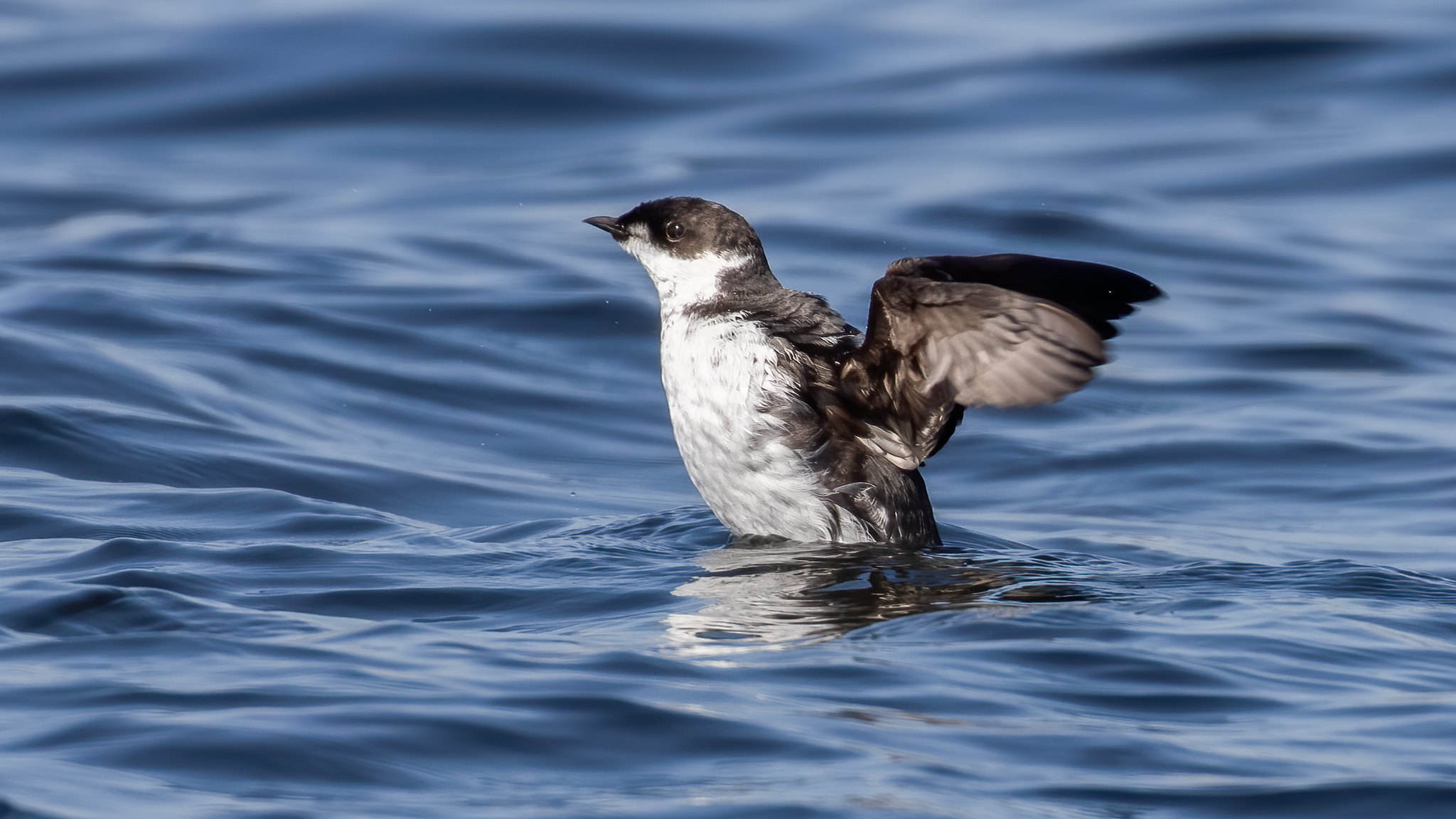
A marbled murrelet at sea. © Eric Ellingson / Flickr Redwoods State and National Parks is another park complex that protects a diversity of habitats, and is also home to a rich diversity of birds. Approximately 280 species have been recorded in the parks. The forest here is, of course, spectacular but can also make for challenging bird observation. The marbled murrelet is a rare species worth seeking out. This bird is associated with the sea but it actually nests in the branches of trees, deep in the forest.
Along the coastal cliffs, birding is a lot easier and you can see thousands of nesting common murres, 3 species of cormorants and pigeon guillemots. Keep your eye out for marine mammals too, and take time to explore the tidepools. There’s enough here to keep a curious naturalist occupied for a long time.
-
Yellowstone National Park
Wyoming, Montana & Idaho
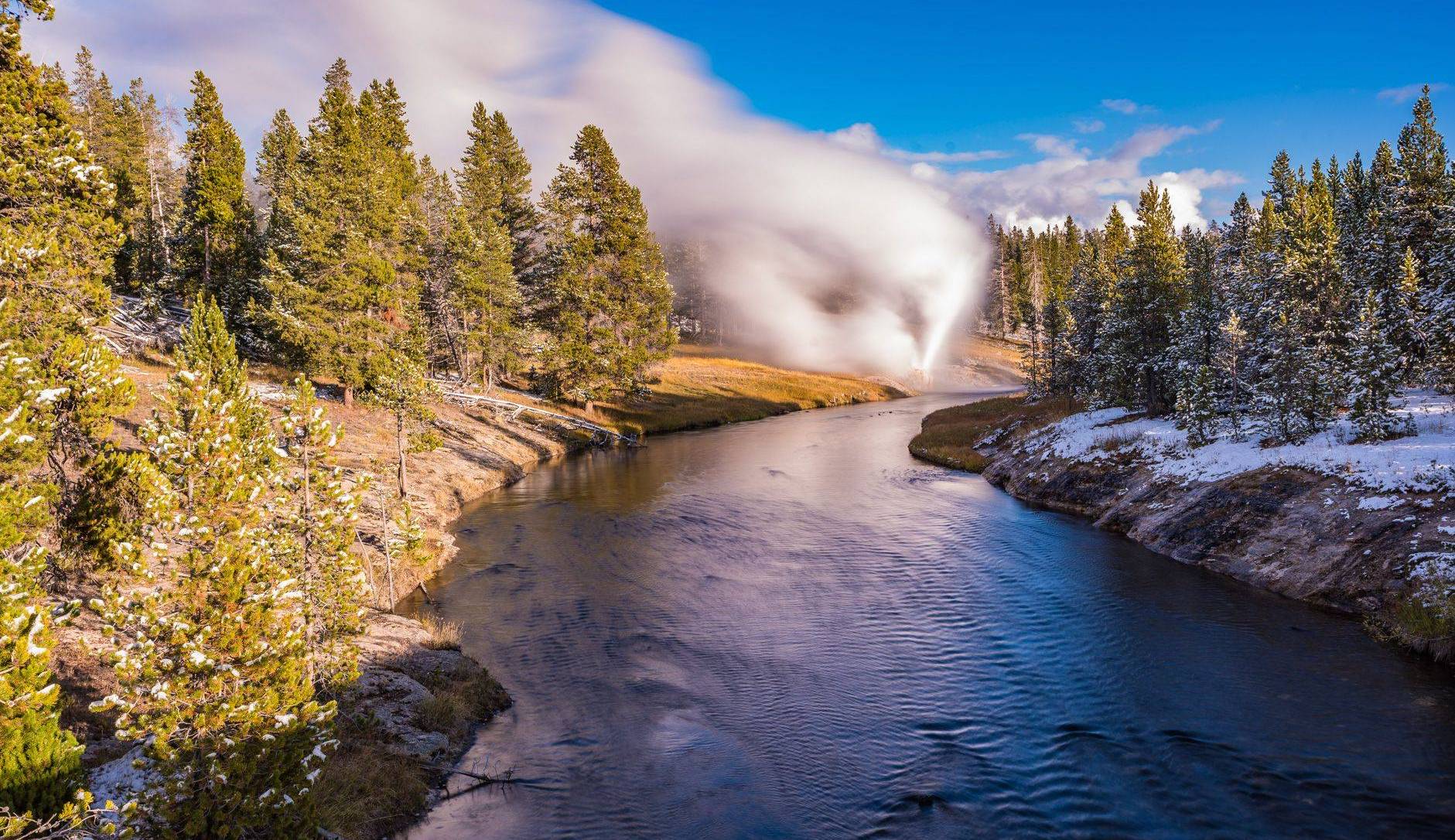
Yellowstone is better known for mammals, but you can find a multitude of bird species throughout the park. © Mark Johnson / TNC Photo Contest 2021 As I wrote in a recent blog about bighorn sheep viewing, many Yellowstone visitors hurry from one well-known spot to another, often missing some of the lesser-known creatures and sights. Yellowstone is a big ecosystem and there’s plenty of large predators and erupting geysers to keep anyone busy. But a naturalist who slows down is often rewarded.
Yellowstone National Park is not known for its excellent birding but there are many great birds to see. Some of the most visible are also the largest: bald eagle, white pelican, sandhill crane and trumpeter swan are all findable.
There are many others. Check rapids in the Yellowstone River for the possibility of harlequin ducks. Other diving ducks and grebes are often seen in other parts of the river. Great gray owls are sometimes seen in the northern part of the park. Two of my favorites are also the most colorful: western tanagers and mountain bluebirds.
Side Trip: Just 15 miles west of West Yellowstone is The Nature Conservancy’s Flat Ranch Preserve, overlooking at a meadow of wildflowers just downstream of the Henry’s Lake outlet. You can take a hike or scan the meadow from the visitor center’s deck. Long-billed curlews and sandhill cranes are visitor favorites, but you can see a variety of birds and other wildlife. Earlier in my career, I’d visit here fairly frequently and always saw something new.




Join the Discussion